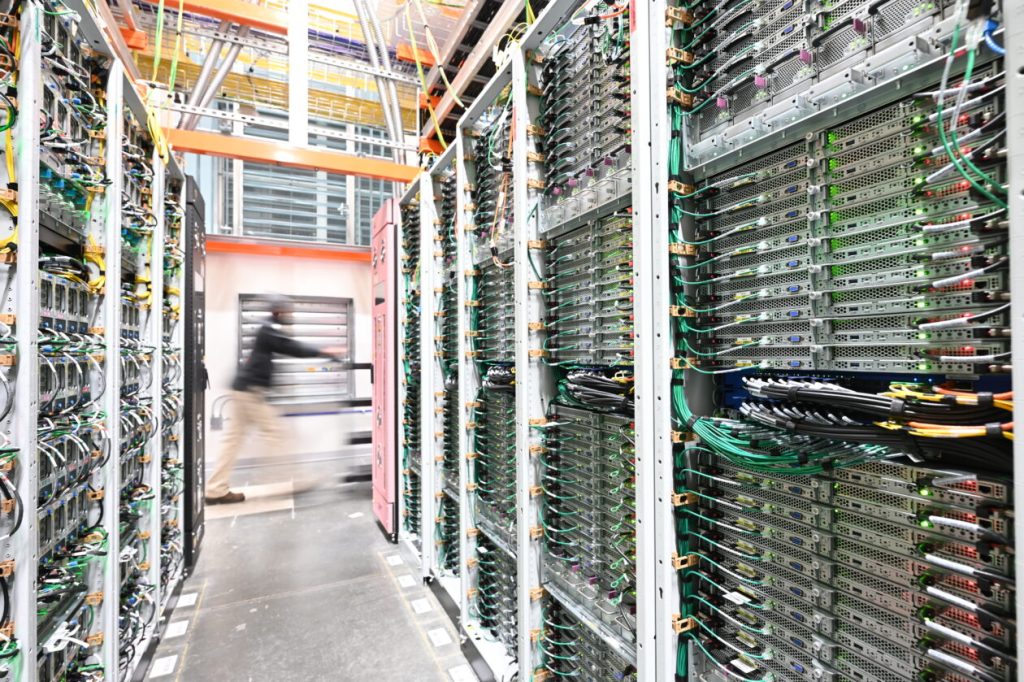The Silent Guardians: How Phaidra’s AI is Making Data Centers Greener
In a world increasingly powered by artificial intelligence, Seattle-based Phaidra is tackling one of the tech industry’s most pressing challenges: the enormous energy consumption of data centers. Led by CEO Jim Gao, Phaidra has developed autonomous AI agents that work tirelessly behind the scenes to optimize data center operations, with a particular focus on cooling systems—which typically consume about 30% of a facility’s total energy. These digital guardians constantly monitor temperatures, voltages, pump operations, and other critical infrastructure, making real-time adjustments to improve efficiency. The technology isn’t just impressive—it’s necessary. “We live in a power constrained world,” explains Gao, highlighting how the rapid construction of data centers to meet AI demands is outpacing available energy supplies. “The ability for these big AI companies to generate revenue is literally limited by the number of electrons available.” In this context, Phaidra’s achievement of reducing cooling-related energy consumption by 25% represents not just cost savings but a crucial path forward for the tech industry.
The urgency of this work has attracted significant attention from investors. Just last week, Phaidra announced a fresh injection of $50 million from a roster of notable backers including Collaborative Fund, Helena, Index Ventures, Nvidia, and Sony Innovation Fund. This latest round brings the company’s total funding to $120 million—a strong vote of confidence in Phaidra’s approach to solving one of technology’s most significant sustainability challenges. The timing couldn’t be more critical, as major tech companies and data center operators plan to invest billions in constructing more energy-intensive facilities over the coming years. Gao aptly calls these facilities “AI factories,” highlighting their industrial-scale energy requirements. The new funding will enable Phaidra to advance its technology further, aiming for even greater energy reductions in these power-hungry operations.
What makes Phaidra’s approach particularly innovative is how their AI agents learn and adapt. Rather than relying on static programming, these systems employ reinforcement learning—continuously observing outcomes, adapting their strategies, and improving over time. This creates a virtuous cycle of efficiency gains that traditional methods simply can’t match. The AI doesn’t just follow predetermined rules; it discovers optimal operating patterns that human engineers might never identify. This autonomous learning capability means that as data centers evolve and grow more complex, Phaidra’s AI grows more sophisticated in parallel, continuously finding new opportunities for optimization. For operators facing skyrocketing energy costs and increasing pressure to reduce carbon footprints, this represents a significant competitive advantage.
Phaidra isn’t content to rest on its current achievements. An emerging focus for the company is enabling coordination between its AI agents to optimize functions across entire systems, not just individual components. This holistic approach recognizes that a data center is more than the sum of its parts—it’s an interconnected ecosystem where changes in one area can have cascading effects throughout. By orchestrating these interactions, Phaidra aims to unlock efficiency gains that would be impossible to achieve by optimizing components in isolation. This system-wide coordination represents the next frontier in data center efficiency, requiring sophisticated AI that can balance countless variables simultaneously while maintaining reliable operations. As data centers grow larger and more complex to support increasingly demanding AI workloads, this coordinated approach becomes not just beneficial but essential.
Beyond cooling infrastructure, Phaidra is expanding its scope to help manage the very data workflows coming through these centers. Modern data centers face highly variable workloads that create significant spikes in energy demand, forcing operators to maintain excess capacity that sits idle most of the time. By smoothing these peaks and redirecting non-urgent tasks to periods of lower demand, Phaidra’s technology can further reduce both energy consumption and costs. This represents a fundamental shift in how data centers operate. As Gao explains: “That doesn’t happen today because the power, cooling and workload management systems all operate independently of each other, without coordination, without orchestration. But that’s the future that we see—significantly more efficient AI factories.”
The implications of Phaidra’s work extend far beyond cost savings for data center operators. As artificial intelligence becomes increasingly central to our economy and society, the environmental footprint of AI infrastructure has emerged as a critical sustainability challenge. Traditional data centers already consume approximately 1-2% of global electricity, and AI-specialized facilities require substantially more power. By making these facilities more efficient, Phaidra is helping to ensure that the AI revolution doesn’t come at an unsustainable environmental cost. This work sits at the intersection of technological innovation and environmental responsibility—using AI itself to mitigate AI’s resource demands. As companies like Microsoft, Google, and Amazon race to build more AI capacity, Phaidra’s technology offers a path to growth that doesn’t require proportional increases in energy consumption. In an era of climate change and resource constraints, this represents not just good business but responsible stewardship of our planet’s limited resources.















